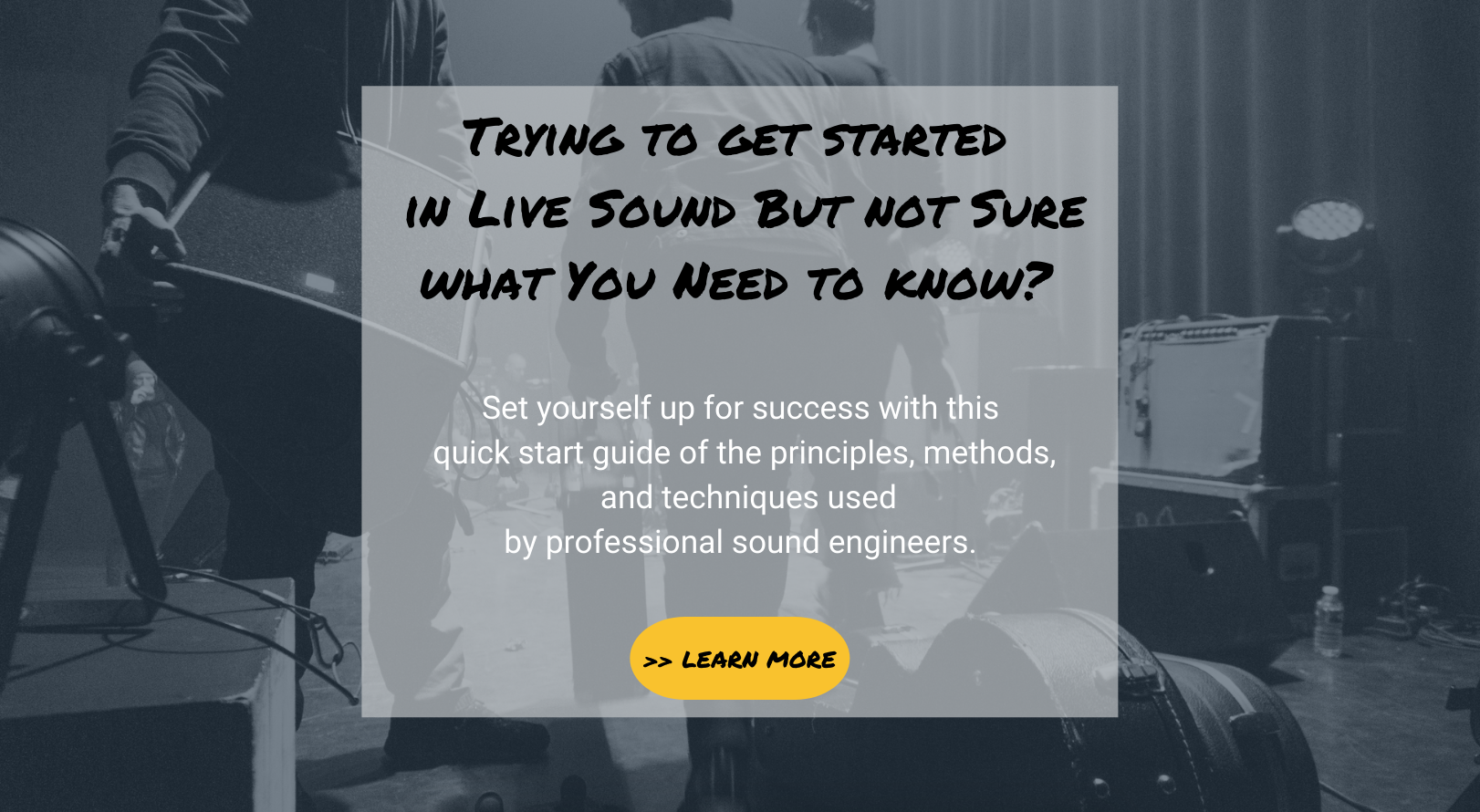Core Principles of Live Sound and Mixing- Part 2- Gain Structure
Feb 17, 2020
One of the most fundamental aspects necessary for a high-quality mix when mixing live sound is proper gain structure. Gain structure encompasses the proper setting of input gains to achieve the best signal-to-noise ratio and unity gain throughout the entire signal path. Often misunderstood, good gain structure is not just turning it up until it’s in the red as a lighting guy once told me! Hmmm.
The process of gain staging occurs at many places in the sound system- between the soundboard, signal processing, amplifiers, inside the soundboard itself, and from the various sources coming from the stage.
Unity Gain
A key concept in gain structure is unity gain, where the level coming into each piece of gear should be the same going out and the next device in the signal path should also be seeing the same level.
For example; if the output meter on your soundboard is showing 0dB (nominal) and the next device in the signal path is the system crossover, it should be seeing 0dB at the input and the signal leaving it should initially be 0dB, and so on down the line.
While some devices are used specifically to increase or decrease gain, and you may make adjustments to output levels to suit your needs, if you apply unity gain first, it will allow you to operate these devices properly.
Setting Optimal Gain of Your Inputs
A critical component in gain structure is setting the optimal gain for input signals. The head amp or pre-amp is where you set your input gain on the soundboard. Each input channel will have its own dedicated gain control. When setting input gain on a channel, you should aim for nominal on the input or solo meter.
Nominal on analog is -0-, however on digital it can range from -12dB to -0- depending on the soundboard. On digital soundboards, it is generally the last green LED or just into the yellow. Red is clipping, and on an analog soundboard, it’s ok to find peak signals occasionally hitting the red. However, digital clipping sounds terrible and is something you want to avoid. So be sure to stay out of the red when mixing on digital.
I used to love to drive my old analog Midas XL4 until it was just about to start tickling the red on the output meters. It really brought out the beautiful warmth of that desk, ah the good old days. But I would never dream of hitting any number of current digital desks that hard. As a matter of fact, I’ve heard several digital consoles produce distortion well below ‘clipping’. As in everything we do, trust your ears. If you hear distortion in the mix, check your signal levels.
There are several other gain stages in the path of an audio signal through the soundboard. The EQ, Inserts, Group Buses, Input Fader, and the Master Output Bus. Each of these stages provides opportunities to add or subtract gain to the input signal. However, it is crucial to prioritize setting the head amp or pre-amp gain correctly.
Without proper head amp or pre-amp gain on your input, your signals will be weak or distorted. If they are too weak, you’ll be trying to make up gain in other places, which can lead to added noise and potential feedback.
Here’s a clue, if you are running all of your input faders all the way at the top to get enough volume, you probably need to adjust your input gain.
If the input gain on all or most of your channels is set too hot, it can cause the Stereo Mix to overload, resulting in undesirable distortion. The thing about distortion is it can ruin a great mix. Even subtle distortion can cause listening fatigue. The audience might not even realize what's happening but they find it tiring to listen to the mix, which results in an unpleasant listening experience.
Achieving proper gain structure is essential for obtaining optimal results when mixing live sound. It's one of the fundamentals that I teach in my program Mixing Music Live.
Start with optimal input gain on your input. When you begin with good sounds at the source and have set proper gain, you should be able to bring your input faders up to -0- and have the makings of a good mix. And if you’ve got a great band and great gear, even better!
The mix should fall together almost effortlessly.
By: Michelle Sabolchick





